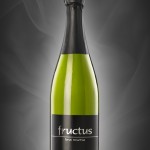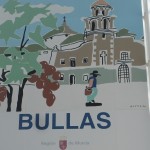LA VIE EN ROSÉ
PROVENÇAL ROSÉ – VARIATIONS ON A THEME?
Well, no, actually – colour-wise, they’re all the same!
Let me firstly say that I am a keen fan of Provençal Rosé. During our very recent Provençal sojourn I tasted well into double figures of different wines and whilst I had my favourites, it’s true to say that I enjoyed them all.
There’s nothing quite like tasting iconic wines in situ. This year (summer 2015) there have been record temperatures to go along with a record number of sunshine hours. So much so that wine producers will be picking early this year as the grapes are reaching optimum maturity and ripeness at least a week earlier than has been normal for decades.
Indeed I know of one producer who has serious concerns about the survival of the new vines he has recently planted, because of the climate change and, of course, its attendant lack of rain. It’s all very well for the teeming tourists, but for farmers there are serious worries.
Now, a change of tack – but the course will revert back to the Rosés of Provence.
I was at a major wine tasting earlier this year where I was talking to a Spanish producer whose wine’s I’d just tasted. One of them was a very pale pink rose petal coloured rosado which I enjoyed. I asked him about the rather dramatic change in colour, considering the rosados that they have produced in the past, which I’ve also enjoyed.
As I expected he replied that this colour change was a response to the current world-wide demand for rosado wines made in the Provençal hue, the very pale pink that is so typical of rosé wines from Provence.
An interesting, similar experience occurred at another tasting this year where a producer was presenting the bodega’s first rosado of the same pale hue. It was ironic, for me, that there were far more negative comments about this wine than positive, from the Spanish tasters. In some respects Spanish consumers are a step behind what’s going on in the rest of the world, re wine. (Another example is Spain’s delay in embracing screw-top bottle closures).
The pioneering bodega which had decided to launch this new (for Spain) shade of rosado was also responding to the international demand for oh-so-pale rosé. They sell all over the world and were not surprised that the wine wasn’t (as yet) popular in their area, and indeed in Spain in general. A profit in his own country . . . .
Today (2nd week of August 2015) I received my copy of what is for me Spain’s best wine magazine, PlanetAVino, whose largely pink front cover suggested that there was a major article about rosado wine inside, before the headline confirmed it. A sub-heading in the article itself reads: “Clarete, Rosado y ahora, Rosé” – (Clarete, the very darkly coloured style of Spanish rosado; Rosado, the various and many variations on the ‘pink’ theme; and now, Rosé – essentially referring to the very pale, Provence style rosés). ,
The article’s author, the owner-editor of the magazine (as well as the excellent Guía Proensa, Spanish Wine Guide), Señor Andrés Proensa is making the point that now in Spain there is a huge choice of rosado wines, in terms of grape varieties, of course, some of which include white wine grapes, as well as in colours.
And this is where our two tacks converge. There are many different grape varieties used for Provençal Rosé wines (this number is smaller than those for Spain, of course, as Provence is a relatively (to Spain as a whole) small area of production. However, though I’m no artist and cannot really note any infinitesimally slight change in shade, when it comes to the colour of Provençal Rosé, they are all the same!
On supermarket shelves there is a vast array of rosé wine in Provence – understandably, as in the towns and villages there are signs proudly claiming that they have a 2,600 year history of making such wines! But, in terms of colour – there’s practically no difference!
I’m sorry, mes amis, but as a spectacle, it’s boring!
I just wonder if there is a producer in Provence who has the guts to break the mould, like the two Spanish producers mentioned earlier. A revolutionary who is prepared to take some flack, who wants to make rosé of the same undeniable quality as that which is made already, but, for heaven’s sake, rosé with some colour in its cheek!
I know – the answer is a rhetorical question: ‘Why change a winning team? If it aint bust, don’t fix it!’ Plus, of course, the evidence in the international market suggests that this pallid rosé is what the consumer demands. Our two Spanish pioneers (along with a few others who’ve also always made their rosado in this style, regardless of fashion) have decided to [join ’em] rather than try and [beat ’em]. So Provençal producers must have it right!
Well, let me leave you with a thought, alluded to already in the paragraph above – consumers are notoriously fickle. The international demand for pallid-pale coloured rosés is nought but a fashion. A mode that will reach its zenith and then, like colour in the wine, fade. As with many fashions it will come again, but for me, it’s variety as well as quality that counts.
This is where Spain (see above) wins out!
Colin Harkness
August 2015










